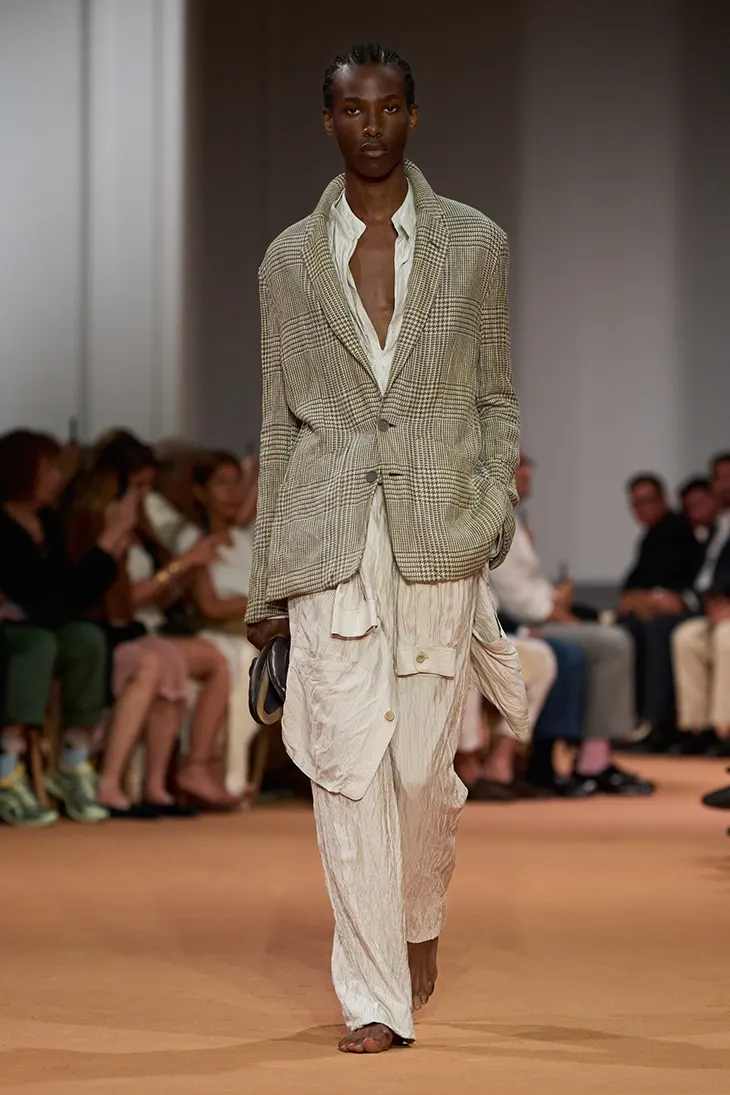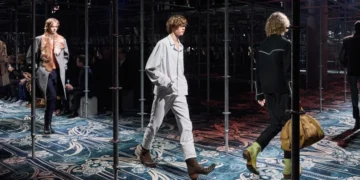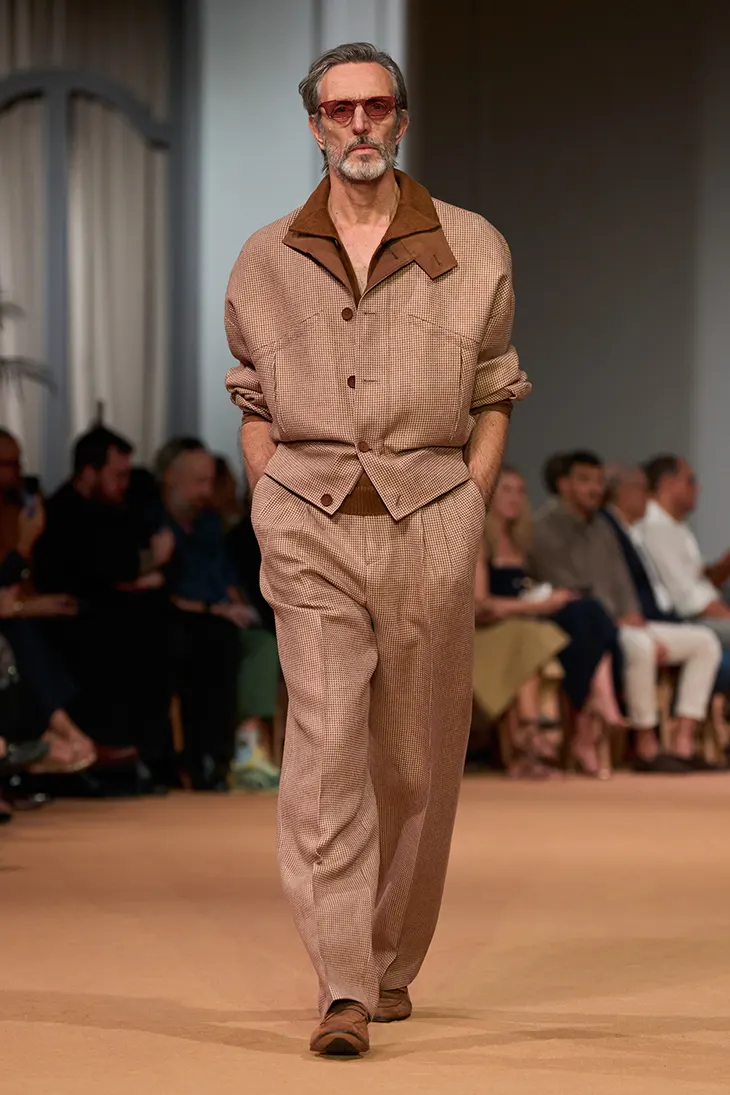
ZEGNA Oasi Collection builds on a vision first shaped by Ermenegildo Zegna in 1910, one that viewed clothing as part of a wider system rooted in nature, people, and place. Oasi Zegna began not as a destination but as a concept, where fabric connected with life beyond the factory walls. Today, Artistic Director Alessandro Sartori continues to develop that idea, treating Oasi Zegna as an evolving approach rather than a fixed location. For him, clothing takes shape through daily use, gaining meaning from how people live in it.
View this post on Instagram
View this post on Instagram
This latest collection and show extend that idea into the present. Sartori staged the presentation at Dubai Opera, which temporarily transformed into Villa ZEGNA for the occasion. James Blake curated and performed the live score, while the set merged the founder’s Trivero home with desert sand, placing the garments in a raw, altered environment.
Sartori chose to let the clothing absorb traces of use and exposure. Garments arrived washed, crinkled, sun-faded, and sculpted by wear. Tied jackets, slippers worn loose, and relaxed styling conveyed an attitude shaped by the friction of daily movement. Sartori compared this with an image that drove the research process, clothes casually stacked on a chair, ready to be worn again. This moment, he said, reflects a life lived with intensity, one where the wearer completes the work of design.
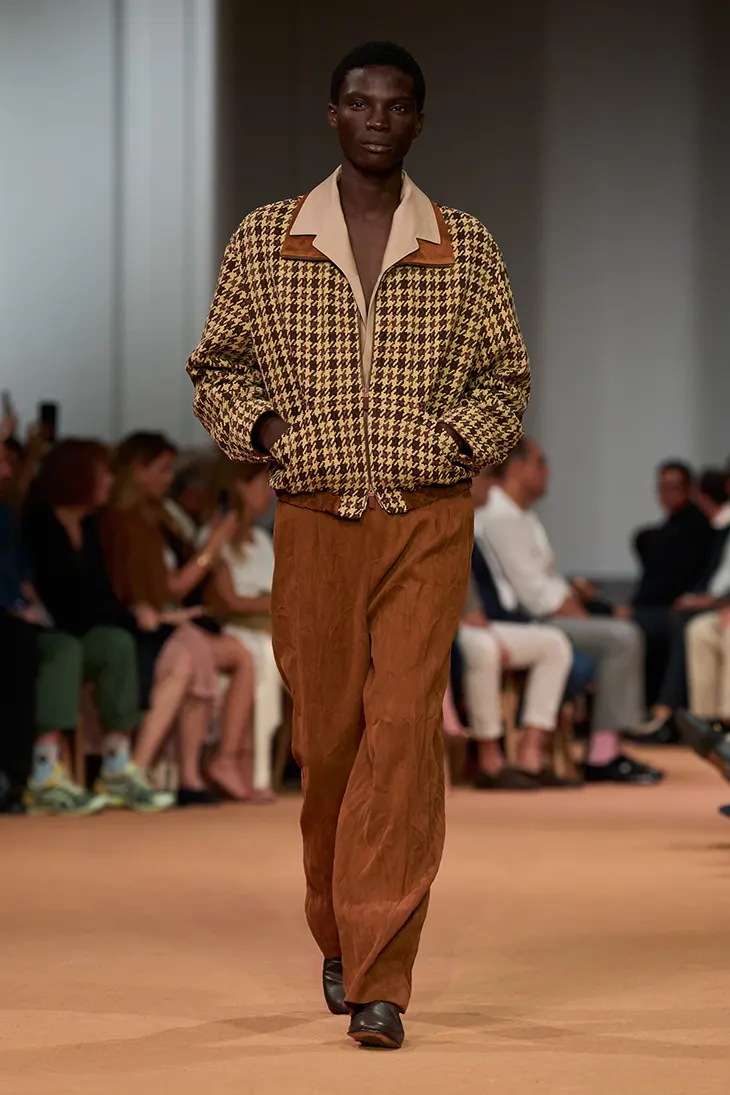
ZEGNA’s silhouettes followed a clear direction. Everything felt loose and fluid. Jackets, even the classic Il Conte, shifted toward boxier, freer fits. Sartori presented Nehru shirts and long overshirts as outerwear, and styled tailored shorts under coats or fitted blousons. Summer suits in pajama stripes featured ultra-light materials. Leather appeared in breezy forms, jackets and coats without weight. Blazers came with low two-button closures, while anorak shirts appeared in both cotton and knit versions.
He also introduced new shapes into the collection. Field jackets, cardigan-style blazers, and low-pocket designs expanded ZEGNA’s formal offerings. Printed shirts paired with matching shorts carried a sense of casual refinement. Accessories followed the same relaxed direction, soft moccasins, slippers, wraparound sunglasses, and oversized bags completed the look.
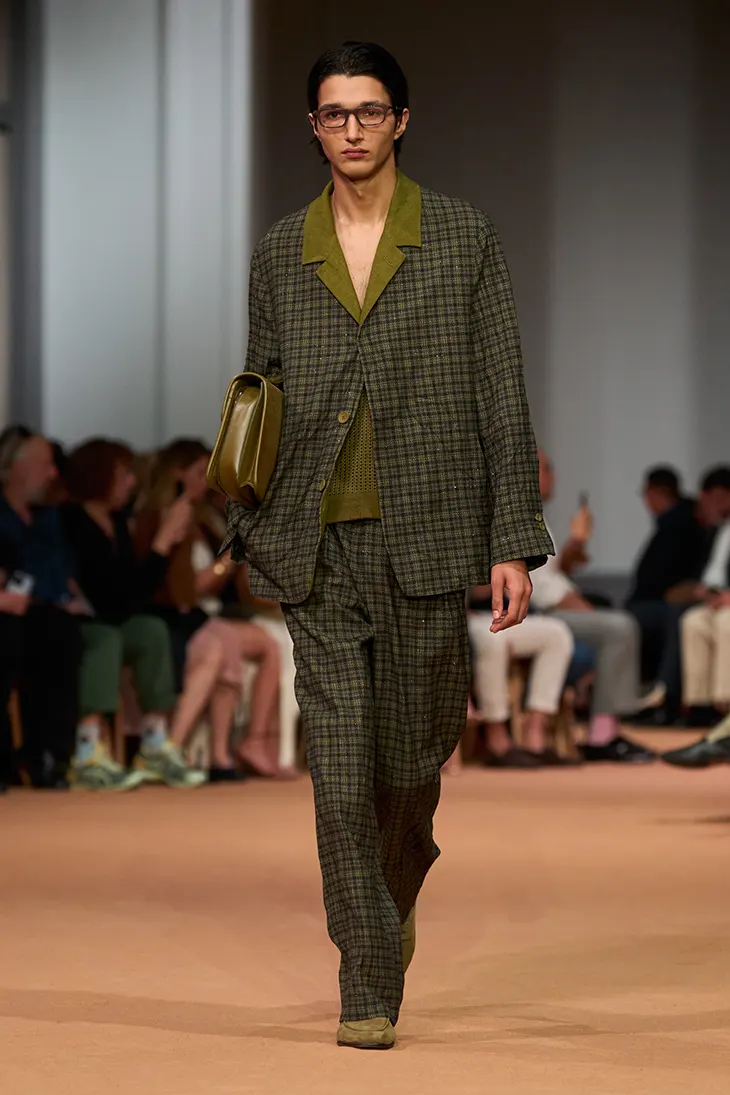
Sartori built the palette around warm neutrals and sun-altered tones. Shades such as bianco Oasi, mastice, burro di montagna, caligine, and corda formed the base. He added acid notes like olio, cognac, liquore, felce, ciclamino, magnolia, and anemone, then grounded the color range with deeper hues like fumo, ardesia lavato, and barolo.
ZEGNA’s fabrics reflected both texture and experimentation. Sartori used summer Shetland in wool-silk-linen blends, ultralight poplin in pure silk or cotton-silk, and jacquards made of linen-wool. Other standouts included sanded hemp, sail canvas poplin, Sea Island cotton, and rustic hand-spun silk. He introduced new hybrids too, cotton-paper-wool toweling and jacquard-patterned leathers, while knitted leather added a sculptural touch.
